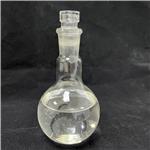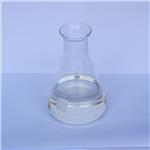Butyryl chloride is a colorless to light yellow liquid with a strong pungent odor. It undergoes vigorous hydrolysis with water; decomposes in water; soluble in almost aprotic organic solvents. It is used as an intermediate for organic synthesis for the preparation of pharmaceuticals, agrochemicals, dyes, cellulose esters, and peroxide compounds.
Butyryl chloride is used as an intermediate for the synthesis of active pharmaceutical ingredients benzoyl peroxide, t-butyl perbenzoate, and benzophenone. It is also used as an acylation reagent. Further, it is used in the preparation of peroxides such as benzoyl peroxide, benzophenone and t-butyl perbenzoate. In addition to this, it is involved in the preparation of chromones and antiproliferative agents.
Butyryl chloride has been used to esterify wood meal dissolved in the ionic liquid, 1-butyl-3-methylimidazolium chloride.
A clear colorless liquid with a sharp odor. Slightly denser than water. Flash point near 20°F. Severely irritates skin, eyes, and mucous membranes. Used to make other chemicals.
Highly flammable. Fumes in air. Decomposes exothermically in water to give corrosive hydrochloric acid.
Butyryl chloride slowly dissolves in water with decomposition and formation of a weakly acidic solution. May react vigorously or explosively if mixed with diisopropyl ether or other ethers in the presence of trace amounts of metal salts [J. Haz. Mat., 1981, 4, 291].
Extremely destructive to the mucous membranes, upper respiratory tract, eyes, and skin. Inhalation may cause death as a result of spasm, inflammation and edema of the larynx and bronchi, chemical pneumonitis, and pulmonary edema. Symptoms of exposure include burning sensation, coughing, wheezing, laryngitis, shortness of breath, headache, nausea, and vomiting.
Special Hazards of Combustion Products: Emits toxic fumes of chlorine gas
Flammability and Explosibility
Flammable
Check IR to see if there is a significant peak at 3000-3500 cm-1 (br) for OH. If OH is present then reflux with less than one mole equivalent of SOCl2 for 1hour and distil directly. The fraction boiling between 85-100o is then refractionated at atmospheric pressure. Keep all apparatus free from moisture and store the product in sealed glass ampoules under N2. LACHRYMATORY; handle in a good fume hood. [Hefferich & Schaeffer Org Synth Coll Vol I 147 1941, Beilstein 2 IV 803.]



